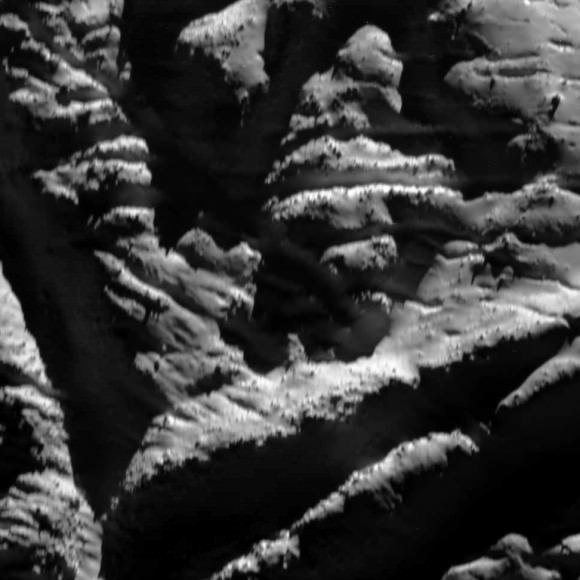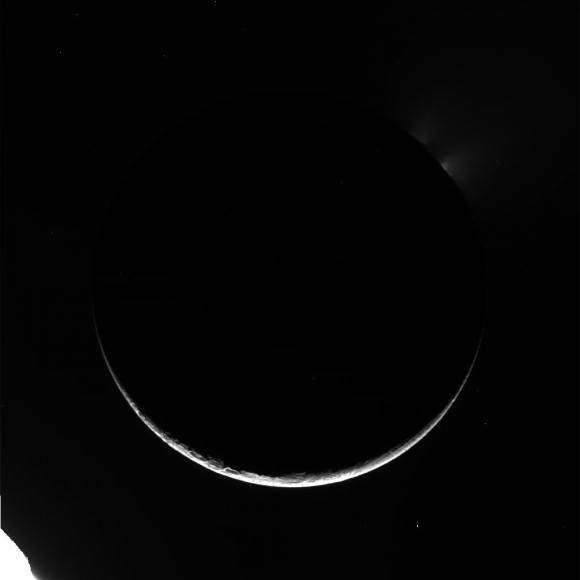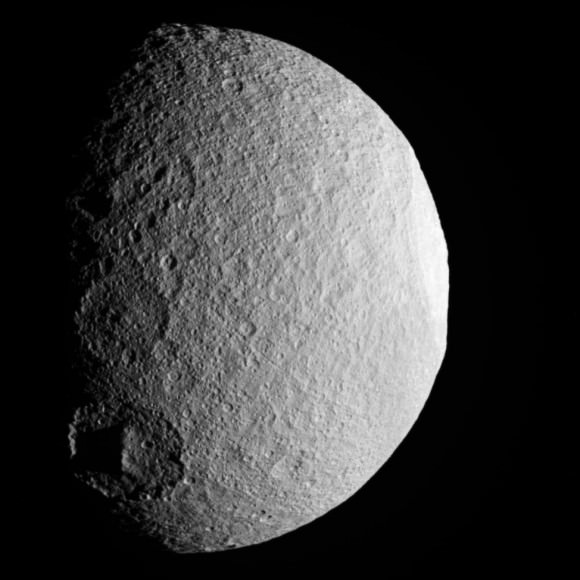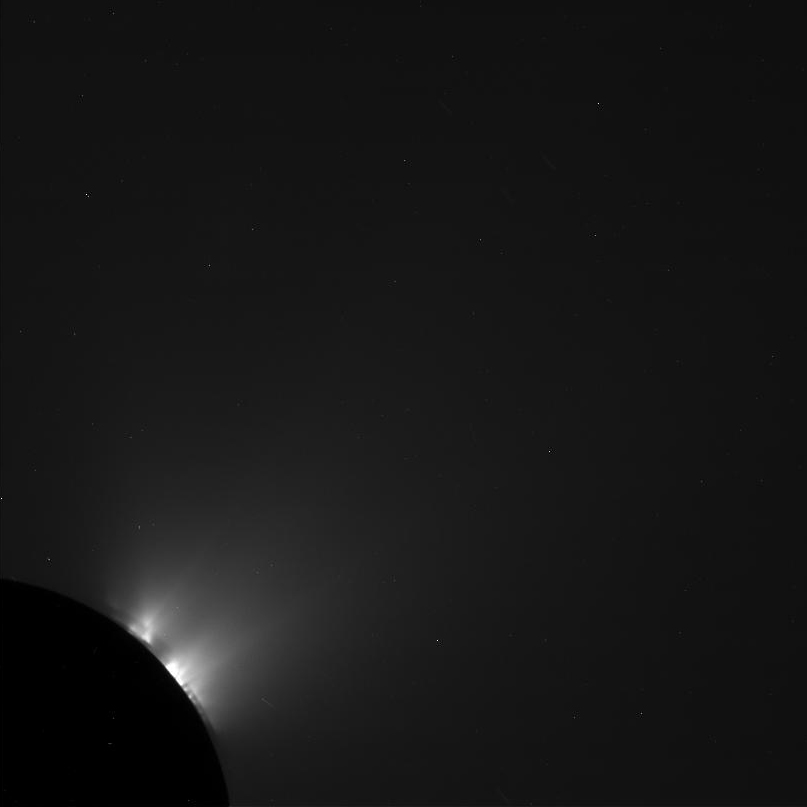[/caption]
Spray it again, Enceladus! This Saturday the Cassini spacecraft paid another visit to Enceladus, Saturn’s 318-mile-wide moon that’s become famous for its icy geysers.During its latest close pass Cassini got a chance to “taste” Enceladus’ spray using its ion and neutral mass spectrometer, giving researchers more information on what sort of watery environment may be hiding under its frozen, wrinkled surface.
The image above shows a diagonal view of Enceladus as seen from the night side. (The moon’s south pole is aimed at a 45-degree angle to the upper right.) Only by imaging the moon backlit by the Sun can the geysers of fine, icy particles be so well seen.
During the flyby Cassini passed within 46 miles (74 km) of Enceladus’ surface.
This image was captured during the closest approach, revealing the distressed terrain of Enceladus’ south pole. Although a bit blurry due to the motion of the spacecraft, boulders can be made out resting along the tops of high , frozen ridges. (Edited from the original raw image to enhance detail.)

This flyby occurred less than three weeks after Cassini’s previous visit to Enceladus. Why pay so much attention to one little moon?
Basically, it’s the one place in our solar system that we know of where a world is spraying its “habitable zone” out into space for us to sample.
“More than 90 jets of all sizes near Enceladus’s south pole are spraying water vapor, icy particles, and organic compounds all over the place,” said Carolyn Porco, planetary scientist and Cassini Imaging science team leader, during a NASA interview in March. “Cassini has flown several times now through this spray and has tasted it. And we have found that aside from water and organic material, there is salt in the icy particles. The salinity is the same as that of Earth’s oceans.
“In the end, it’s the most promising place I know of for an astrobiology search,” said Porco. (Read the full interview here.)

Not to be left out, Tethys was also paid a visit by Cassini. The 662-mile-wide moon boasts one of the most extensively cratered surfaces in the Solar System, tied with its sister moons Rhea and Dione. In this raw image captured by Cassini on April 14, we can see some of the moon’s ancient, larger craters, including Melanthius with its enormous central peak.

Cassini passed Tethys at a distance of about 6,000 miles (9000 km) after departing Enceladus. Cassini’s composite infrared spectrometer looked for patterns in Tethys’ thermal signature while other instruments studied the moon’s geology.
Image credits: NASA/JPL/Space Science Institute. See more images from the Cassini mission on the CICLOPS site here.


What’s the stuff that looks like fog or mist in the dark areas?
Probably processing artifacts, hence the warning (“Edited” … “enhanced”.)
On Mon, 16 Apr 2012 21:06:22 -0000, Disqus wrote
My guess would be surface features illuminated by reflected light from the brightly lit peaks. Sort of the same way the dark side of our moon is visible, barely, by reflected light from earth.
What’s the stuff that looks like fog or mist in the dark areas?
What’s the stuff that looks like fog or mist in the dark areas?
The Enceladus surface picture is astonishing, we have to land something on there, should be easy at 0.011g, almost a docking manoeuvre and falling down a crevasse won’t be too much of a problem either . Maybe gather the plume material to use as reaction mass for the approach to save weight and $$ on launch.
I’m still amazed that they’re willing to fly a 1.5-billion-dollar spacecraft through a geyser plume. Repeatedly!
Absolutely breathtaking images! I’m with Steve, we need to get a lander on the surface post haste! I truly love Cassini.
it amazes me that we can fly a spacecraft literally tens of miles from the surface of a moon 1.5 billion km away with pin point accuracy. these pictures are astonishing
Absolutely stunning. So beautiful. It will render you speechless. That is a hard thing to do with me:)